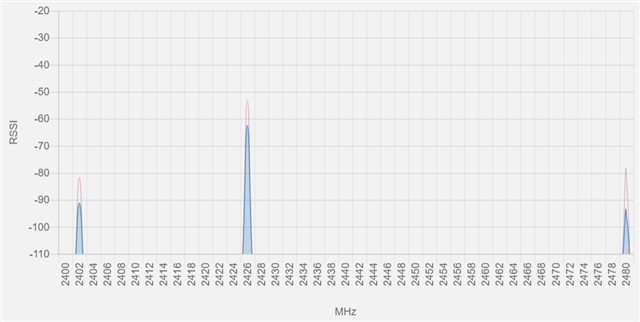Hello,
it seems that the 15.2 infocenter radio_test instructions are somewhat different from the 15.0 infocenter instructions.
Trying to get a general understanding of how radio_test functions in 15.2.
I have a 832 DK and a 840 DK flashed with radio_test, no changes have been made to the example.
I have Putty for 832 on com8, and 840 on com7.
I can see on Putty, "Radio test example started', from both DK's.
Now not sure what to do. Which sequence of the CLI commands are needed to show that RX/TX is working?
I tried something like, start_rx on com8, and then start_tx_carrier on com7, and then print_rx on com8, which returned on com8, "Data: 0", 256 times. Probably need some other steps.
I saw this case from a few days back asking how to test low/mid/high channels, and I would also like to know where in the example the values 2.402/2.442/2.480 GHz are entered (maybe overlooked something in sdk_config.h).
thank-you,



